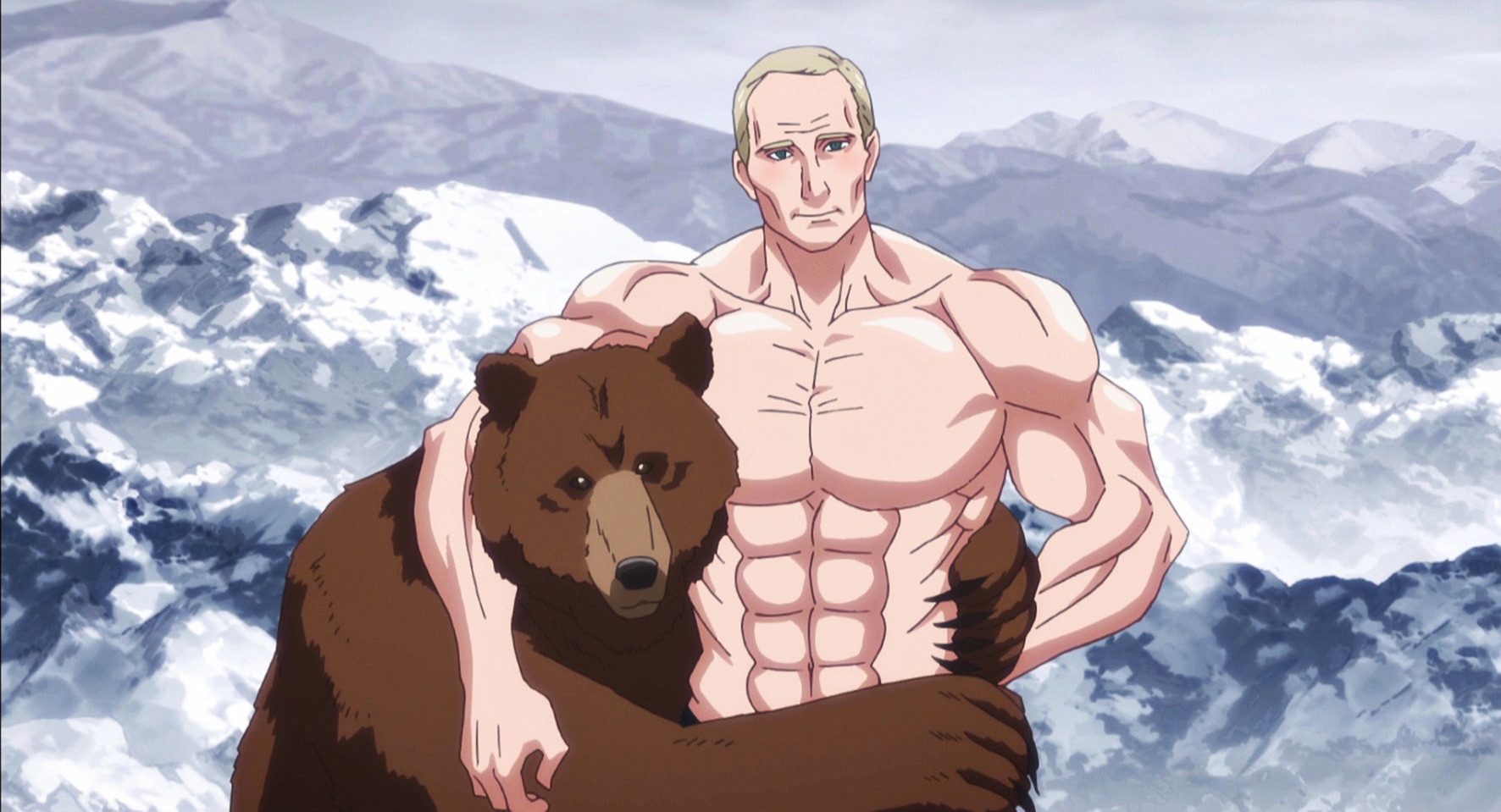
'How Heavy Are the Dumbbells You Lift'
Mitsue Yamazaki/Doga Kobo, 2019Japanese anime is famous for its unusual plotlines, dazzling visuals, and satirizing of current topics and stereotypes. For the Japanese, Russia has always been an enigma, one that artists, directors, and screenwriters have tried to unravel with varying degrees of success. In the West, the Russian image is inextricably linked to vodka, borsch, and brick-faced weather-beaten resilience. But how does anime depict characters of Russian origin?
The quintessential Russian anime character is Ivan Braginsky, who represents Russia in Hetalia: Axis Powers (2009). This series allegorically shows various historical and political events of WWII. The main protagonists are the Axis countries (Japan, Germany, Italy) and the Allies (Russia, the U.S., Britain, France, China). Each is portrayed as an individual character.
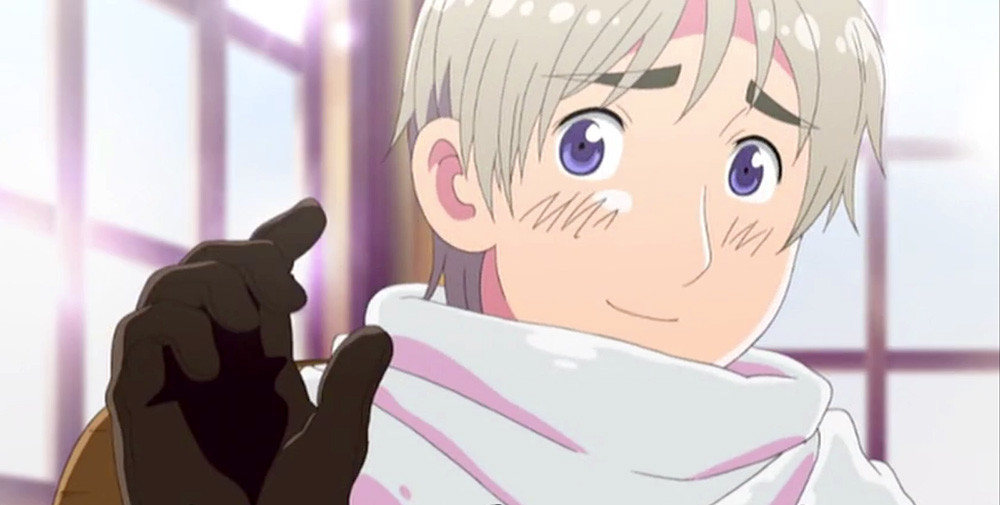
'Hetalia: Axis Powers'
Bob Shirohata/Studio Deen, 2009Russia is a kind, cheerful guy, the tallest of all the Allies. He is offended by General Frost, who personifies the harsh winters that come every year. Despite this, the formidable general saves Braginsky more than once from attacks by enemy countries. Russia is amicable and happy for any opportunity to meet with his allies, but suffers a mental breakdown due to his bloody and chaotic history. He has two sisters, Ukraine and Belarus. However, the former abandoned her brother owing to the influence of European friends, while the latter maniacally wants to marry him. Other countries are afraid of him, in particular Latvia, Lithuania and Estonia. Braginsky believes that someday all countries in the world will unite with Russia.
Japanese anime also depicts famous historical figures, including Stalin, Rasputin and Putin. However, these are mostly cameo appearances. In the animated feature movie Lupine III: The Secret of Mamo (1978), Lupine encounters the immortal creature Mamo. Mamo tells him about his life, full of meetings with historical figures and significant events. His story is illustrated on large screens. Stalin can be seen there, as well as Karl Marx and Lenin.
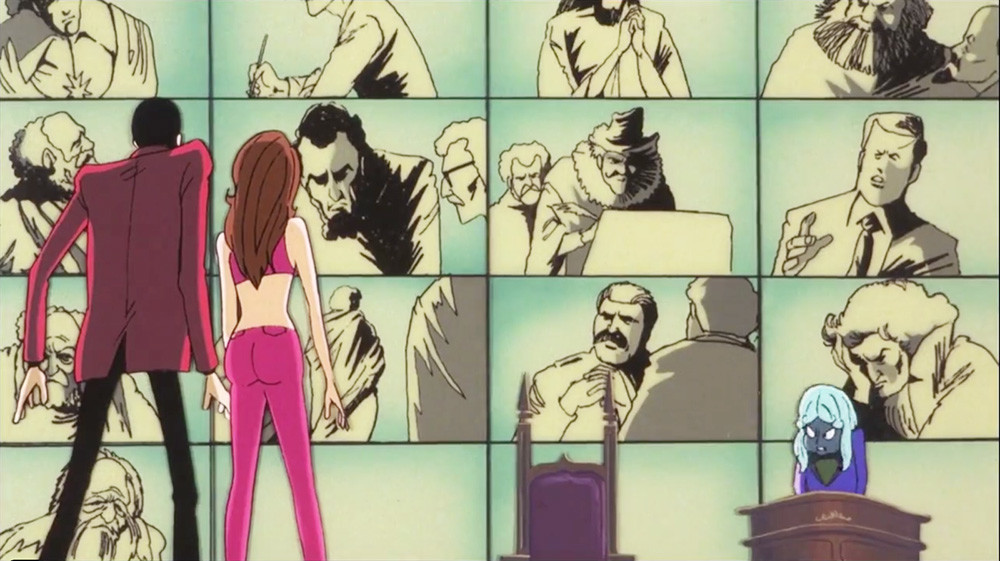
'Lupine III: The Secret of Mamo' (1978)
Sōji Yoshikawa/Tokyo Movie Shinsha, 1978In another movie in this series, the mystical Grigory Rasputin, a friend of the last tsar’s family, is portrayed as a role model for his descendants, who are generally shown as antagonists. Rasputin in Lupine III: From Russia With Love (1992) is the spitting image of his grandfather.
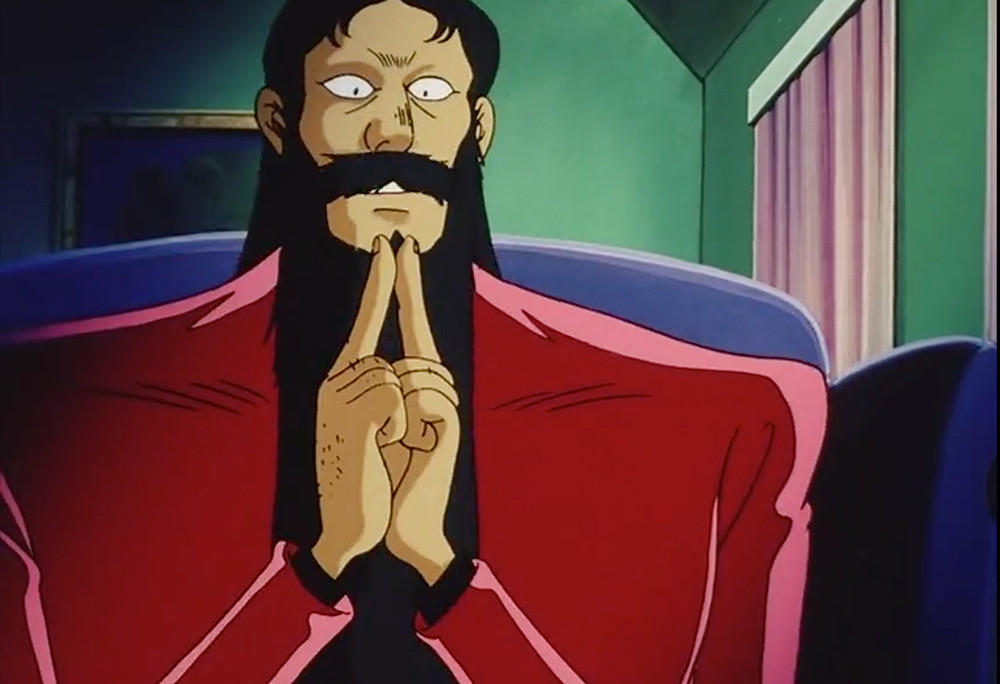
'Lupine III: From Russia With Love' (1992)
Osamu Dezaki, 1992He is able to read people's minds and predict their future, which wins him followers around the world, and the famous politicians Gorbachev and George W. Bush turn to him for assistance. The young Rasputin hunts for the gold of Nicholas II, allegedly left behind by the tsar after escaping abroad (not quite what happened in reality). He has a quirky habit of sticking his finger in his mouth, nose and ears when communicating with others. Like a classic villain, he lives in an enormous Gothic castle in the small Siberian village of Kosak (needless to say, there are no castles in Russian villages, never mind Gothic ones).
And in the anime Crystal Triangle (1987), Professor Koichiro Kamishiro, an archeologist in search of an artifact conferring supernatual powers, is hindered by Rasputin's grandson from the KGB. He loves firing from a hand-held anti-tank grenade launcher, and at moments of high drama addresses his grandfather in broken Russian.
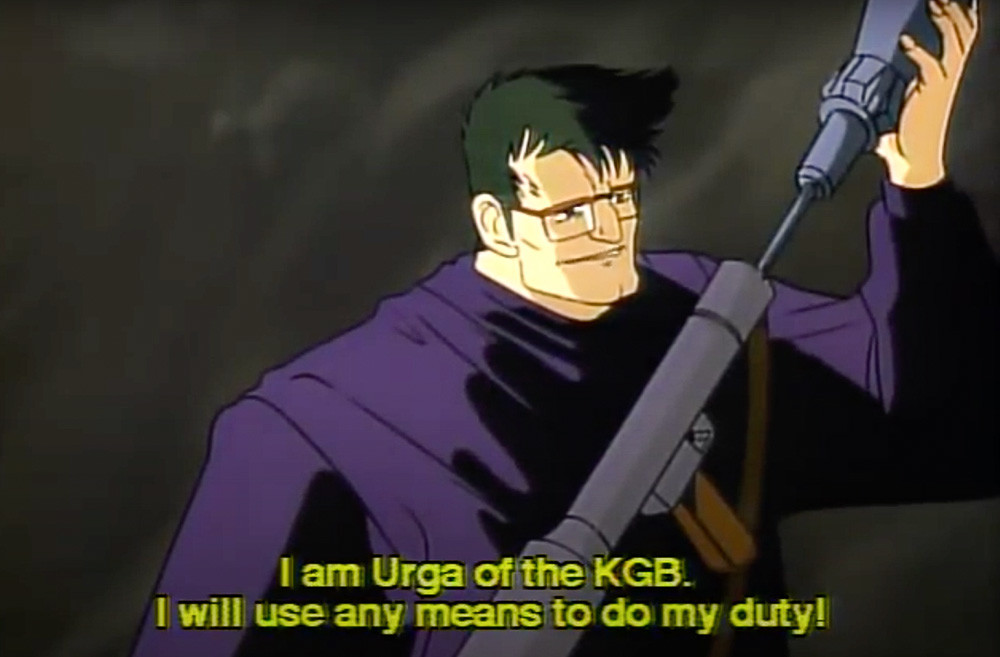
'Crystal Triangle' (1987)
Seiji Okuda/Animate Film, 1987In the anime How Heavy Are the Dumbbells You Lift (2019), Zina Voyd, a student from Russia, presents Putin to her Japanese classmates. He is half-naked, pumped and hugs a brown bear against the backdrop of snowy mountains. Zina quotes the president: “Like our great leader, Comrade Putin, always says: Just do your very best!” Putin has never actually said such words, at least not in public.
The anime film Bakumatsu no Spasibo (1997) depicts a significant historical event in Russian-Japanese relations — the signing of the Treaty of Shimoda in 1855, the first diplomatic agreement between the two countries. Under this treaty, trade links were established between the Russian Empire and Japan. Despite the historical framework, a few old chestnuts are on display: Russian sailors on the frigate Diana drink vodka and dance to the tune of Kalinka-Malinka. That said, they are shown as friendly, good-natured people, and the Russian ambassador, Admiral Yevfimiy Putyatin, is a wise seafarer and diplomat.
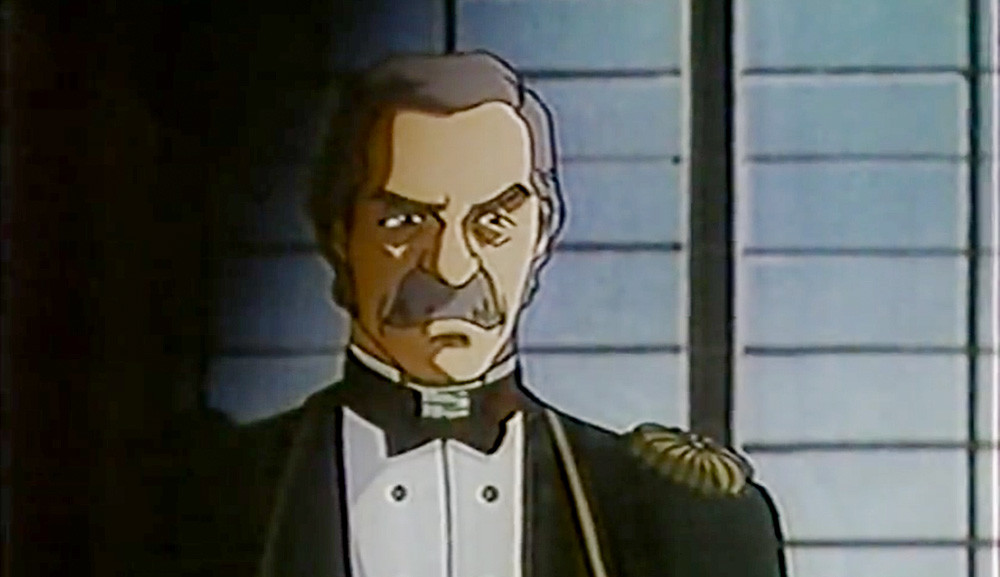
Yevfimiy Putyatin from 'Bakumatsu no Spasibo' (1997)
Satoshi Dezaki/Magic Bus, 1997Japanese anime also makes occasional mention of Russian writers. The animated series Bungou Stray Dogs (2019) is about people endowed with superpowers who use them to do business or enact justice. The plot revolves around the Armed Detective Agency, which confronts criminal groups and investigates crimes. Most of the characters are named after famous writers and poets. The character named after Russian novelist Fyodor Dostoevsky is the leader of the underground organization “Rats of the House of the Dead” (a reference to the writer’s semi-autobiographical work The House of the Dead).
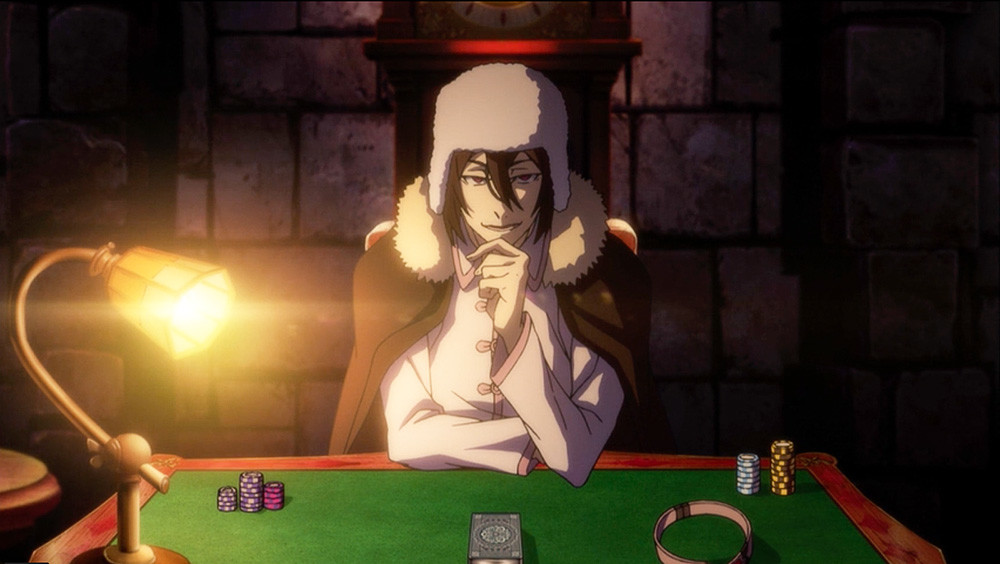
Fyodor Dostoyevsky from 'Bungou Stray Dogs' (2019)
Takuya Igarashi/Tokyo MX, 2019He has the superpower “Crime and Punishment”. It’s unclear what this is precisely, but fans of the series guess that one touch from Dostoevsky is enough to kill a man. Possessing strong religious convictions, he reflects on the sinful nature of man.
Anime storylines often play out in the USSR. The Lupine III franchise (1977-1981) tells about the adventures of the swindler Lupine. In episode 58, he decides to steal a diamond belonging to Monika, a Russian ballerina. Arriving in the USSR, the protagonist sees a country crawling with police, ready to shoot spies from capitalist countries.
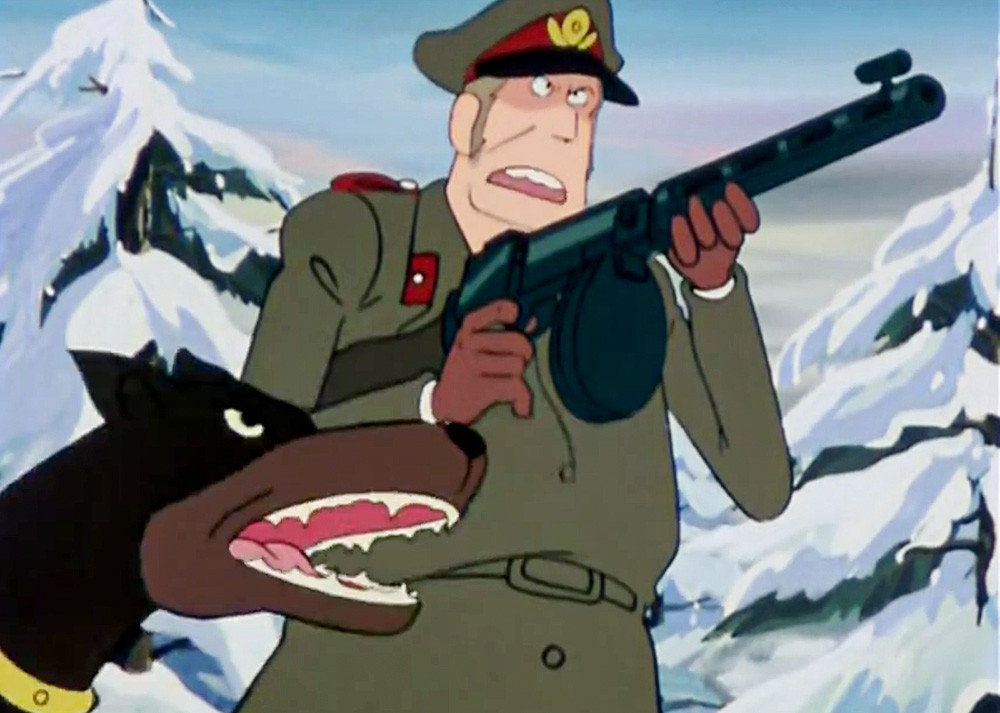
Lupine III episode 58
Yagi Ishikura/Unknown Outsourced Studio, 1978The USSR is also shown as a political force that played a decisive role in the history of humankind. In the anime Blue Comet SPT Layzner (1985), the Cold War tensions between the United States and the Soviet Union are escalating further into space. Humans are beginning to explore the galaxy and have already built bases on the Moon and Mars. However, displeased by this, the Gradosians, an alien race, decide to play the two superpowers off against each other so as to conquer Earth without incurring losses of their own.

'Blue Comet SPT Layzner' (1985)
Ryōsuke Takahashi/Nippon TV, 1985Besides the depressing picture of the totalitarian USSR, anime paints some positive Soviet characters. The anime Aim for the Top! Gunbuster (1988-1989) tells about humanity’s struggle against insectoid aliens who have arrived from distant space. Jung Freud is a Russian female pilot, one of the main characters.
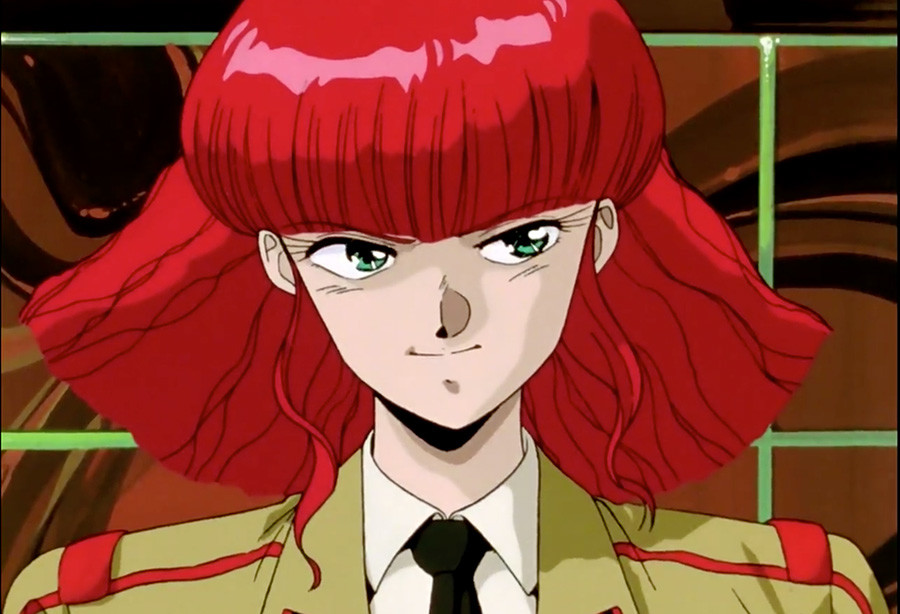
Aim for the Top! Gunbuster (1988-1989)
Hideaki Anno/Gainax, 1988She pilots a combat robot bearing the image of the hammer and sickle. She was raised in a lunar colony and has an explosive personality, causing endless conflicts with other female pilots. But over time she becomes closer to them, eventually becoming their best friend.
In the 1990s, manga and anime started featuring Russian characters who had left the country after the collapse of the USSR and found new jobs abroad. Most of them were former agents of the KGB, spetsnaz (special forces) and veterans of the Afghan War. “Blanka” or Sergei Varishkov from the screen adaptation of the 1990s manga comic Banana Fish (2019) is a former KGB lieutenant who deserted after his wife was killed.
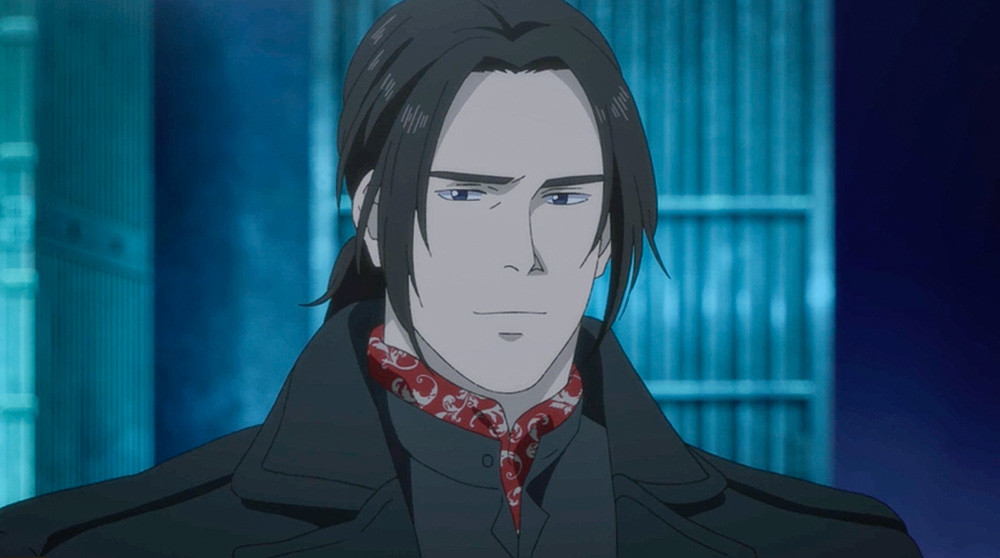
'Banana Fish' (2019)
Hiroko Utsumi/MAPPA, 2019Varishkov becomes a professional hitman, taking the pseudonym “Blanka” in honor of his wife, who came from Belarus. Varishkov is the mentor of the main character, Ash Lynx, and teaches the young man everything he knows.
The anime Gunsmith Cats (1995) depicts former spetsnaz captain Natasha Rodionova, who post-USSR joined the Russian mafia under the pseudonym “Bloody Blade”. Rodionova is engaged in an illegal drug business and gets paid in heroin, which she then sells in Russia.
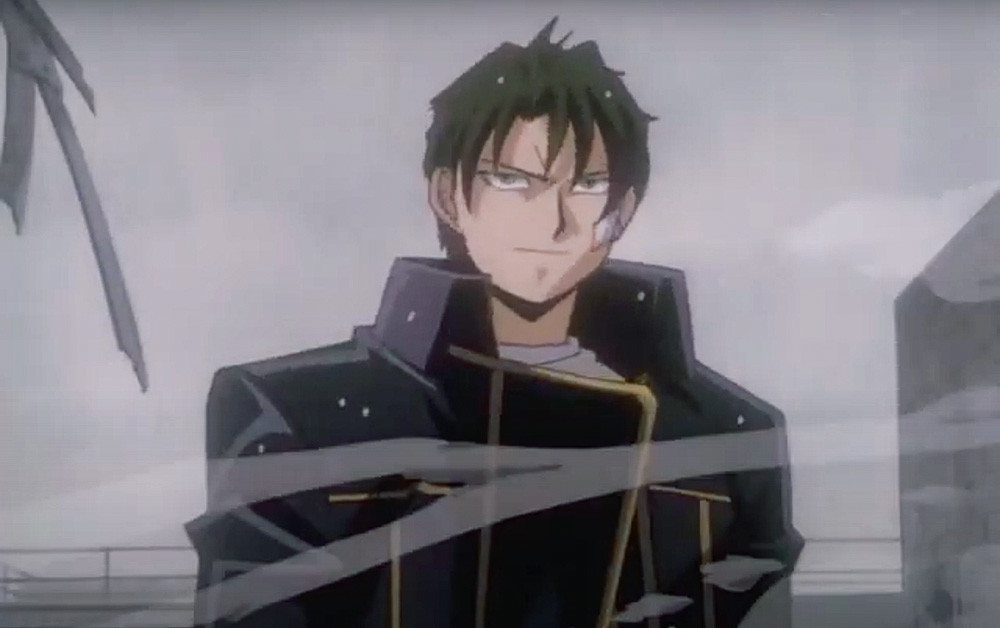
'Gunsmith Cats' (1995)
Takeshi Mori/OLM, Inc., 1995Another character with a similar fate is “Balalaika” or Sofia Pavlovna Irinovskaya in Black Lagoon (2006). Her father, on the run for some unknown crime, fled to America. Sofia was raised by her grandfather, a major-general in the Soviet army.
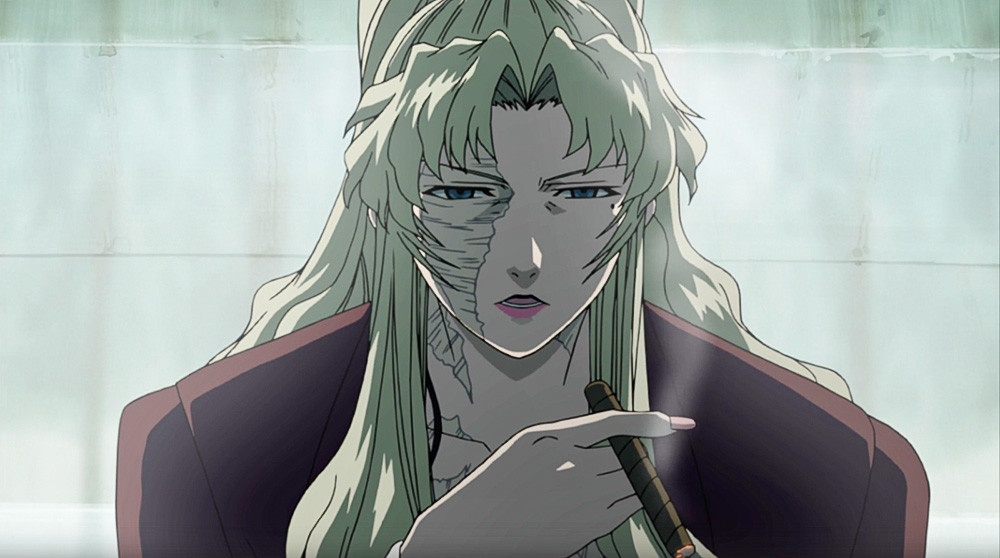
Balalaika from 'Black Lagoon' (2006)
Sunao Katabuchi/Madhouse, 2006On maturity, Vladilena (her second pseudonym — short for “Vladimir Ilyich Lenin”) joined the Soviet Airborne Troops and took part in the Afghan War, rising to the rank of captain, but later getting demoted and discharged. In 1992, she formed a mafia organization made up of former fighters from her unit, known as “Hotel Moscow”. The alias “Balalaika” she picked up during the Afghan War (the name of the Dragunov sniper rifle in soldier’s jargon).
Anime also features characters of Russian origin who don’t look like the typical Russian. Simon Brezhnev in Durarara (2010) is black man born and raised in Russia to American parents. His real name is revealed in the first episode — Semyon. He works as a promoter in a Russian sushi restaurant serving unusual dishes, such as sushi with borsch or salmon caviar.
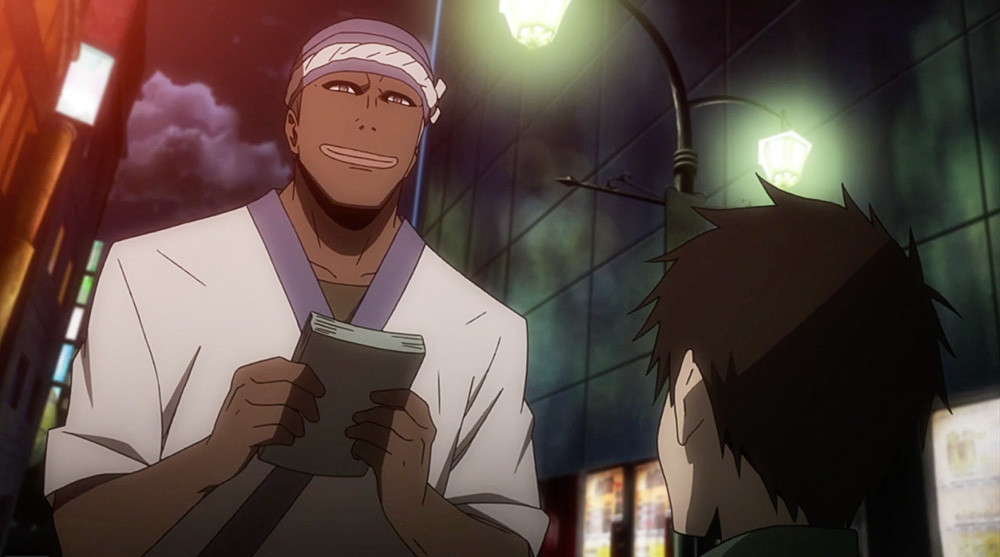
Brezhnev from 'Durarara' (2010)
Takahiro Omori/Brain's Base, 2010He gets involved in some insane plotlines that combine erotic overtones, magic and Orthodox Christianity. The Qwaser of Stigmata (2010) is a prime example. According to the story, alchemists (qwasers) are able to control the elements of the periodic table. Their powers are activated by consuming soma, a special kind of breast milk. The alchemists are in pursuit of a mystical artifact — the miraculous icon of the Theotokos of Tsaritsyn.
The main protagonist in the anime is Sasha Hell. He is 13 years old. His difficult childhood means that he trusts no one. The boy is serious and straight-talking, drawing comparisons with the Siberian frost. He can control iron. Sometimes he inserts Russian words into his speech, but his accent makes them sound funny and incomprehensible to Russian speakers.
In more modern anime series, the Russian stereotypes are far less striking. An example is Yuri!!! On Ice (2016), which tells about young figure skater Yuri Katsuki and his coach Viktor Nikifor, striving for gold in a figure-skating grand prix.

'Yuri!!! On Ice' (2016)
Sayo Yamamoto/MAPPA, 2016Without a single spoonful of borsch, it accurately depicts the realities of modern Russia, including the uniform of Russian figure skaters, the streets of St. Petersburg, and even the ice palaces of Sochi and Saransk (the capital of the Republic of Mordovia). One of the main characters is Russian figure skater Yuri Plisetsky, a young man full of talent and ambition. He tries with all his might to attract Nikiforov’s attention so that the latter becomes his coach.
***
Russian characters in anime have progressed enormously from stereotyped inhabitants of a harsh, distant land, whose mindset matches the climate, to quite true-to-life, profound individuals.
The heroine of the above-mentioned anime How Heavy Are the Dumbbells You Lift (2019), Zina Voyd, a Russian student in Japan on exchange, represents the three types of traditional Russian characters in anime: intellectual with an icy smile, impassive and cold-blooded, and fiercely patriotic.
How has the image of Russian characters in anime changed over time? Stereotypical features and love of borsch, vodka and swearing are no longer their defining qualities. Now these are merely colorful strokes added to the vivid, charismatic portraits that are intriguing in and of themselves.
The author would like to thank the non-commercial project RUSSIA IN ANIME for its assistance in preparing the text.
If using any of Russia Beyond's content, partly or in full, always provide an active hyperlink to the original material.
Subscribe
to our newsletter!
Get the week's best stories straight to your inbox